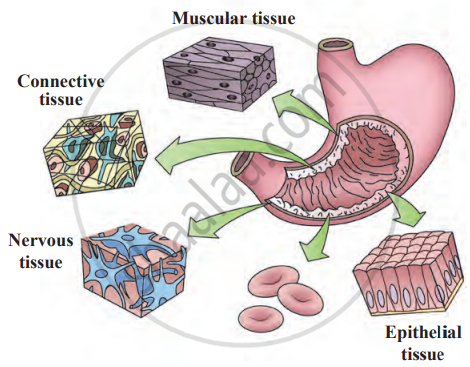Topics
Living World
- What is ‘Living’?
- Taxonomical Aids
Systematics of Living Organisms
- Systematics of Living Organisms (Introduction)
- Systematics of Living Organisms (Introduction)
- Concept of Systematics
- Concept of Systematics
- Classification of Taxonomy
- Classification of Taxonomy
- Three Domains of Life
- Three Domains of Life
- Chemotaxonomy
- Chemotaxonomy
- Numerical Taxonomy
- Numerical Taxonomy
- Cladogram
- Cladogram
- Phylogeny
- Phylogeny
- DNA Barcoding
- DNA Barcoding
- Taxonomic Hierarchy of Living Organisms: Unit of Classification
- Taxonomic Hierarchy of Living Organisms: Unit of Classification
- Taxonomic Hierarchy
- Taxonomic Hierarchy
- Units of Classification
- Units of Classification
- Binomial Nomenclature
- Binomial Nomenclature
- Salient Features of Five Kingdoms
- Salient Features of Five Kingdoms
- Acellular Organisms
- Acellular Organisms
Kingdom Plantae
- Classification of Kingdom Plantae
- Salient Features of Major Plant Groups Under Cryptogams
- Salient Features of Major Plant Groups Under Phanerogams
- Plant Life Cycle and Alternation of Generations
Kingdom Animalia
- Criteria Used for Animal Classification
- Animal Body Plan
- Animal Classification
Cell Structure and Organization
- Cell: Structural and Functional Unit of Life
- Types of Cells
- Components of Eukaryotic Cell
Biomolecules
- Biomolecules in Living System
- Biomolecules in the Cell
- Carbohydrates
- Lipids
- Proteins
- Nucleic Acids
- Enzymes
- Nature of Enzyme Action
- Nomenclature of Enzymes
- Classification of Enzymes
- Mechanism of Enzyme Action
- Enzyme - Substrate Interactions
- Factors Affecting Enzyme Activity
- Metabolism
- Metabolic Pool
- Secondary metabolites (SMs)
Cell Division
- Introduction of Cell Division
- Cell Cycle
- Types of Cell Division
- Significance of Mitosis
- Significance of Mitosis
Plant Tissues and Anatomy
- Tissues - “The Teams of Workers”
- Meristems or Meristematic Tissues
- Permanent Tissue
- Tissue System
- Secondary Growth in Plants
- Wood
- Cork Cambium and Secondary Growth
- Anatomy of Root, Stem and Leaf
Morphology of Flowering Plants
- Division II- Angiosperms
- Morphology
- Study of Some Important Families
Animal Tissue
Study of Animal Type : Cockroach
- Habit and Habitat
- Systematic Position
- External Morphology
- Body Cavity
- Digestive System of Cockroach
- Circulatory System Or Blood Vascular System
- Human Respiratory System
- Reproduction System
- Interactions with Mankind
Photosynthesis
- Photosynthesis: Food-Making Process in Plants
- Chloroplasts
- Nature of Light
- Mechanism of Photosynthesis
- Light Dependent Reaction (Hill Reaction \ Light Reaction)
- Photophosphorylation
- Light Independent Reactions (Dark Reaction \ Biosynthetic Phase)
- Photorespiration
- C4 Pathway Or Hatch-slack Pathway
- Cam - Crassulacean Acid Metabolism
- Factors Affecting Photosynthesis
Respiration and Energy Transfer
- Formation of ATP
- Respiration
- Types of Respiration: Aerobic and Anaerobic Respiration
- Phases of Respiration: Glycolysis
- Phases of Respiration: Pyruvate Oxidation (Link Reaction)
- Phases of Respiration: Electron Transport System (Ets) and Oxidative Phosphorylation
- Phases of Respiration: Tricarboxylic Acid Cycle (Citric Acid Cycle Or Kreb’s Cycle)
- Phases of Respiration: Electron Transport Chain (Electron Transfer System)
- Phases of Respiration: Fermentation
- Respiratory Balance Sheet
- Amphibolic Pathways
- Utility of Stepwise Oxidation
- Respiratory Quotient (R.Q.)
Human Nutrition
- Nutrients and Nutrition
- Component of Food
- Human Digestive System
- The Mouth and Buccal Cavity
- The Salivary Glands
- The Teeth and Its Structure
- Tongue
- The Food Pipe/Oesophagus
- The Stomach
- The Small Intestine
- Pancreas
- The Large Intestine
- Liver
- Physiology of Digestion
- Absorption of Food
- Assimilation of Food
- Egestion of Food
- Nutritional and Digestive Tract Disorders
Excretion and Osmoregulation
- Excretion
- Modes of Excretion: Ammonotelism, Ureotelism, and Uricotelism
- Human Excretory System
- Kidney and Its Internal Structure
- Kidney Tubule (Nephrons)
- Function of the Kidney - “Production of Urine”
- Concentration of Urine
- Composition of Urine
- Accessory Excretory Organs
- Common Disorders of the Urinary System
Skeleton and Movement
- Movements and Locomotion
- Location and Structure of Skeletal Muscles
- Working of Skeletal Muscles
- Mechanism of Muscle Contraction
- Physiology of Muscle Relaxation
- Relaxation of Muscle Fibres
- Skeletal System
- Group of Skeleton
- Types of Joints
- Disorders Related to Muscles
- Disorders Related to Bones
Animal Tissue:
In the bodies of animals, various organs work together to perform specific functions essential for survival. For example, the lungs and trachea, with the help of muscle contraction and relaxation, enable respiration. Each organ is made up of different types of tissues, and these tissues work together to ensure the organ functions efficiently. Tissues are groups of specialised cells with similar structure and function.

Types of Animal Tissues
- Epithelial tissue: covers and protects the surfaces of organs and the body. Examples: skin, lining of the respiratory tract.
- Connective tissue: provides support and connects different parts of the body. Examples: blood (transports oxygen, nutrients, and waste materials), bones, and cartilage.
- Muscular tissue: responsible for movement through contraction and relaxation. Examples: muscles that aid in breathing (like those supporting the lungs and trachea).
- Nervous tissue: enables communication between different parts of the body by transmitting signals. Examples: brain, spinal cord, and nerves.
If you would like to contribute notes or other learning material, please submit them using the button below.
Shaalaa.com | Animal tissues
to track your progress
Related QuestionsVIEW ALL [43]
Match the items given under column I with those given under.
| Column I | Column II | ||
| (i) | Bread mould | (a) | Has chlorophyll |
| (ii) | Spirogyra | (b) | Leaves with spores |
| (iii) | Moss | (c) | Naked seeds |
| (iv) | Fern | (d) | Saprophyte |
| (v) | Gymnosperm | (e) | Has rhizoids |
